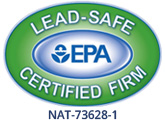How to Prevent Mold in Your Air Conditioner
 While mold is a natural part of our ecosystem, you don’t want it accumulating in your air conditioning system. Your home or business first develops a musty scent and as it operates, the HVAC system spreads the spores through the air. This latter effect impacts indoor air quality, potentially resulting in an allergic reaction, asthma attack, skin rash, upper respiratory symptoms or an irritated nose and eyes.
While mold is a natural part of our ecosystem, you don’t want it accumulating in your air conditioning system. Your home or business first develops a musty scent and as it operates, the HVAC system spreads the spores through the air. This latter effect impacts indoor air quality, potentially resulting in an allergic reaction, asthma attack, skin rash, upper respiratory symptoms or an irritated nose and eyes.
While air conditioning systems can help reduce mold growth when used correctly, they also attract spores when improperly maintained. Thinking about indoor air quality, here’s what you should know.
How Mold Can Grow in Your A/C System
In general, areas with moisture tend to attract mold. With your air conditioner, the evaporator coil is often a hotspot for mold formation. This is the spot that simultaneously pulls in moisture while cooling your home’s air.
However, the evaporator coil alone doesn’t attract mold. Subsequent processes and parts, including the drain pan and condensate drain line can cause moisture and debris to back up. This combination causes the air conditioner to cool less effectively and water to build up, creating the perfect environment for mold to grow.
As a result, the drain pan, evaporator coil and blower wheel are often the first locations for mold formation within your HVAC system. From here, the mold progresses through the ducts. Any leak can also cause mold spores to spread throughout your home.
Checking the Air Conditioner for Mold
An HVAC system that hasn’t been cleaned in a while may harbor various types of debris, including dirt, dust and pet hair. Yet mold has a distinctive presence: Yellow, green, black or brown growths with a musty smell.
A professional assessing the HVAC system will check the drain pan, ducts and indoor unit for mold. Generally, mold congregates near moisture and feeds off areas with significant dust buildup.
Preventing Mold in Your Air Conditioning System
Along with routinely checking and changing the filter and scheduling HVAC cleanings in the spring and fall, you can use the following strategies to prevent mold from building in your air conditioning system:
- Use a high-efficiency filter, such as a pleated design with a MERV 8 or higher rating.
- Consider a UV purifier to reduce the presence of mold and bacteria colonies. This solution is placed near the evaporator coil to deactivate microorganisms’ DNA to prevent reproduction and reduce potential biofilms.
- Flush the condensate drain line in the spring to remove dust and other debris. Further have this part checked for cracks, rust and get it disinfected.
- Routinely check and clean the evaporator coil at least once per year. As this part is fragile, professional assistance is recommended.
- Look for strategies to reduce humidity in your home. Consider supplementing your air conditioner with a dehumidifier and help air circulate by turning on the fans as you use the AC.
Are you concerned about mold buildup in your air conditioner? Make an appointment with MJ Fahy & Sons to have your HVAC system checked and discuss strategies to reduce mold in the future. Contact us today to learn more.




